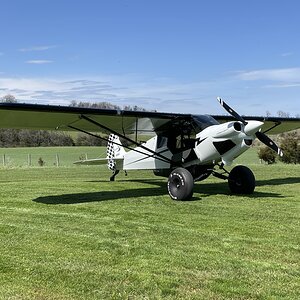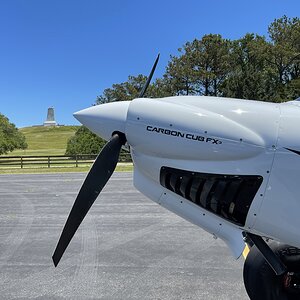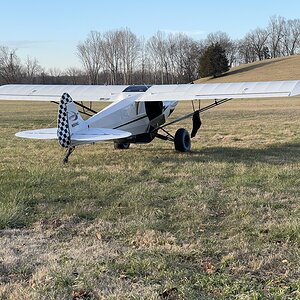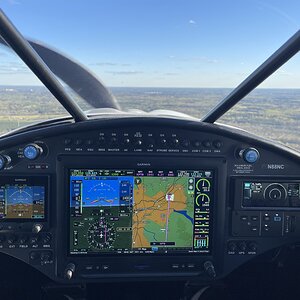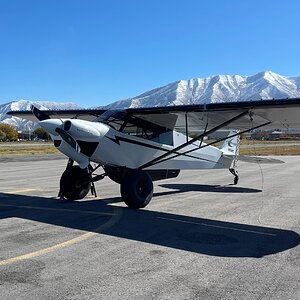Cleared Direct
Well-known member
- Joined
- Jan 28, 2002
- Posts
- 82
July 2, 2004
To: American Eagle Pilots
Re: Flight Operations Update
Following up on last week’s letter on pilot staffing, I wanted to provide you with additional information on new hire classes, training events and new captain upgrades that might be helpful in understanding what is taking place within Flight Operations.
Obviously, forecasting pilot staffing is very complex, involves considerable coordination among several departments and has to be done far in advance, usually more than six months before and often before we know our exact schedules and flying. On the whole, we usually know how many aircraft we will have the following year, have a reasonable understanding of where we can expect to fly and with what frequency, and we have a lot of data that gives us a good idea regarding how many aircraft will require maintenance, how many spare aircraft are needed and what sort of unforeseen events might pull aircraft from the schedule. But forecasting pilot availability, especially by aircraft type and location, is a bit more of an art. Operating four fleet types, seven crew bases builds complexity into pilot staffing forecasts, as does the turnover we experience among all levels of pilots. Over the past several years our Crew Resources department has done an excellent job in forecasting pilot staffing and managing the vacancy bid process. Rarely have we been off our staffing requirments by 1%, either more or less.
However, despite our best efforts at forecasting pilot staffing needs, a number of additional factors have contributed to the staffing variances we are now experiencing:
There are many challenges to keep up with the staffing requirements of an airline that is adding four aircraft per month, operating several different fleet types, managing multiple crew domiciles and handling off-schedule operations. We completely understand how important schedule integrity is to your quality of life and, equally important, how staffing impacts reliability and dependability. I hope this provides you with a better understanding of the issues that are impacting pilot staffing, and that you’re aware we’re increasing training events to get us back on track. I think you’ll agree with me that growing a carrier is a lot more fun than shrinking, but growth brings with it a number of challenges. We are working hard to address those challenges and believe you will steadily see an improvement in reliability and schedule integrity going forward.
Regards, and best wishes for a safe and healthy Fourth of July.
Ed Criner
To: American Eagle Pilots
Re: Flight Operations Update
Following up on last week’s letter on pilot staffing, I wanted to provide you with additional information on new hire classes, training events and new captain upgrades that might be helpful in understanding what is taking place within Flight Operations.
Obviously, forecasting pilot staffing is very complex, involves considerable coordination among several departments and has to be done far in advance, usually more than six months before and often before we know our exact schedules and flying. On the whole, we usually know how many aircraft we will have the following year, have a reasonable understanding of where we can expect to fly and with what frequency, and we have a lot of data that gives us a good idea regarding how many aircraft will require maintenance, how many spare aircraft are needed and what sort of unforeseen events might pull aircraft from the schedule. But forecasting pilot availability, especially by aircraft type and location, is a bit more of an art. Operating four fleet types, seven crew bases builds complexity into pilot staffing forecasts, as does the turnover we experience among all levels of pilots. Over the past several years our Crew Resources department has done an excellent job in forecasting pilot staffing and managing the vacancy bid process. Rarely have we been off our staffing requirments by 1%, either more or less.
However, despite our best efforts at forecasting pilot staffing needs, a number of additional factors have contributed to the staffing variances we are now experiencing:
- A lower number of furloughed pilots accepted recall last year than had previously been the case,
- A lower number of AA furloughed pilots accepted flowback than expected,
- AA furloughed fewer pilots than originally projected and,
- The percentage of flowback pilots who finished training was lower than expected, at least among initial classes.
- We’ve accepted 70 flowback pilots year-to date.
- We’ve hired 282 new pilots year-to-date.
- We projected to hire 254 new hires.
- We’ve had 174 upgrades to Captain year-to-date, generating additional training events to fill First Officer positions. The longevity of the most junior of them is just 4.8 years.
- Junior Jet Captain longevity is 6.3 years.
- In January 2004, we projected 42 EMB long-term training events. By June 2004, we’ve already had 76 EMB long-term training events.
There are many challenges to keep up with the staffing requirements of an airline that is adding four aircraft per month, operating several different fleet types, managing multiple crew domiciles and handling off-schedule operations. We completely understand how important schedule integrity is to your quality of life and, equally important, how staffing impacts reliability and dependability. I hope this provides you with a better understanding of the issues that are impacting pilot staffing, and that you’re aware we’re increasing training events to get us back on track. I think you’ll agree with me that growing a carrier is a lot more fun than shrinking, but growth brings with it a number of challenges. We are working hard to address those challenges and believe you will steadily see an improvement in reliability and schedule integrity going forward.
Regards, and best wishes for a safe and healthy Fourth of July.
Ed Criner

